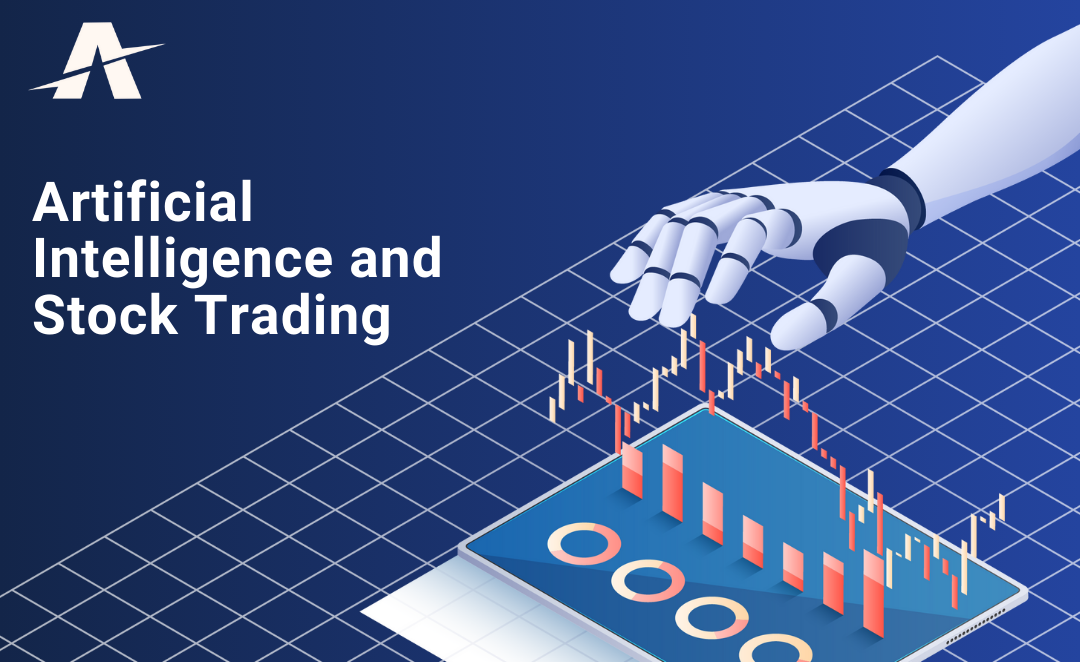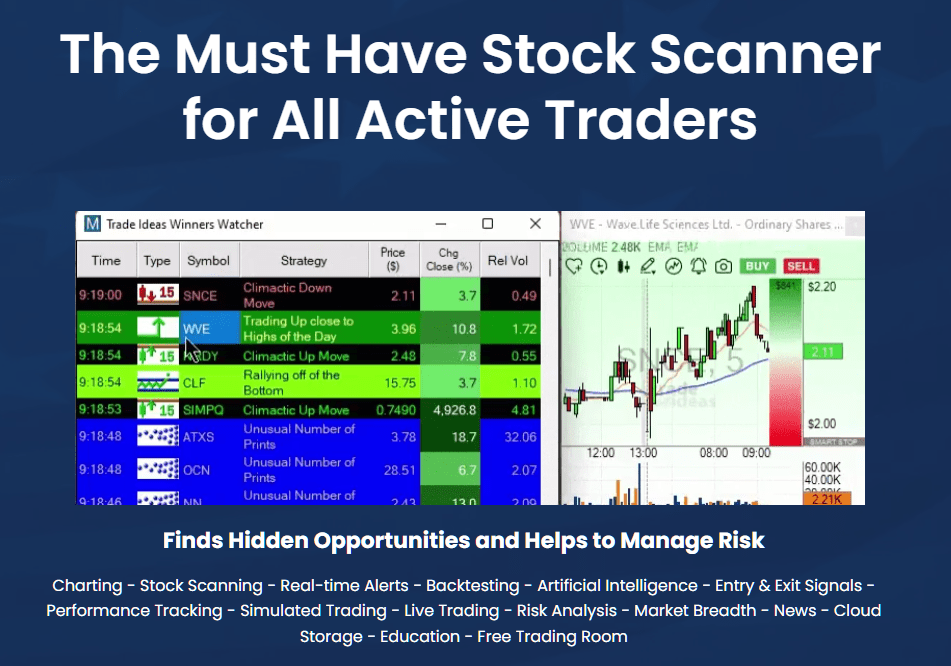20 Best Reasons For Choosing AI Stock {Investing|Trading|Prediction|Analysis) Sites
Top 10 Tips To Evaluate Ai And Machine Learning Models Used By Ai Trading Platforms To Predict And Analyze StocksIn order to ensure that you have accuracy, reliability, and useful insights, it is essential to assess the AI and machine-learning (ML) models utilized by trading and prediction platforms. Overhyped or poorly designed models could lead to inaccurate predictions and even financial loss. Here are 10 top strategies for evaluating AI/ML models that are available on these platforms.
1. Know the Model's purpose and Approach
A clear objective: Determine if the model was designed to be used for trading short-term or long-term investments, or sentiment analysis or risk management.
Algorithm transparency - Look to see if there are any public disclosures regarding the algorithms (e.g. decision trees neural nets, neural nets, reinforcement learning etc.).
Customization: See whether the model is customized to suit your particular investment strategy or risk tolerance.
2. Evaluation of Performance Metrics for Models
Accuracy: Make sure to check the model's prediction accuracy, but don't rely solely on this measure, since it can be misleading in the financial market.
Precision and recall (or accuracy) Find out the extent to which your model is able to differentiate between genuine positives - e.g. precisely predicted price changes as well as false positives.
Risk-adjusted returns: Assess if the model's predictions yield profitable trades following taking into account risk (e.g., Sharpe ratio, Sortino ratio).
3. Check the model with backtesting
History of performance The model is tested using historical data in order to determine its performance under previous market conditions.
Out-of-sample testing Conduct a test of the model using data it wasn't trained on to prevent overfitting.
Scenario analyses: Compare the model's performance under various markets (e.g. bull markets, bears markets, high volatility).
4. Be sure to check for any overfitting
Overfitting: Be aware of models that are able to perform well using training data but not so well with unseen data.
Regularization techniques: Check whether the platform uses techniques like L1/L2 normalization or dropout in order to prevent overfitting.
Cross-validation. Ensure the platform performs cross validation to determine the generalizability of the model.
5. Examine Feature Engineering
Relevant features - Check that the model incorporates meaningful features, such as volume, price, or technical indicators. Also, verify sentiment data and macroeconomic factors.
Choose features: Ensure that you only choose important statistically relevant features and does not include redundant or irrelevant information.
Dynamic updates of features Check to see how the model adapts itself to new features, or market changes.
6. Evaluate Model Explainability
Interpretation - Make sure the model gives explanations (e.g. value of SHAP and the importance of features) to support its claims.
Black-box models: Beware of platforms that use excessively complex models (e.g. deep neural networks) with no explainability tools.
User-friendly insights: Find out whether the platform is able to provide useful insight for traders in a way that they can comprehend.
7. Assess the model Adaptability
Market changes: Check whether your model is able to adapt to market fluctuations (e.g. new regulations, economic shifts or black-swan events).
Continuous learning: See if the system updates the model regularly with new data to boost performance.
Feedback loops. Make sure that your model takes into account feedback from users and real-world scenarios in order to improve.
8. Check for Bias in the Elections
Data bias: Ensure that the information provided used in the training program are representative and not biased (e.g. an bias towards certain sectors or time periods).
Model bias: Check if the platform actively monitors the biases in the model's predictions and reduces the effects of these biases.
Fairness - Make sure that the model isn't biased towards or against certain sectors or stocks.
9. Assess Computational Efficiency
Speed: See whether the model can make predictions in real time, or with minimal latency. This is particularly important for high-frequency traders.
Scalability Check the platform's capability to handle large sets of data and multiple users with no performance degradation.
Resource usage : Determine if the model has been optimized to make use of computational resources efficiently (e.g. GPU/TPU).
Review Transparency, Accountability and Other Questions
Model documentation - Make sure that the platform contains complete details about the model including its design, structure, training processes, and limits.
Third-party auditors: Check whether the model has been subject to an independent audit or validation by an independent third party.
Error handling: Examine to see if your platform has mechanisms for detecting and fixing model mistakes.
Bonus Tips:
User reviews and case study User feedback and case studies to gauge the real-world performance of the model.
Trial period - Try the demo or trial for free to test the model and its predictions.
Customer support: Make sure that your platform has a robust assistance to resolve problems with models or technical aspects.
The following tips can help you assess the AI models and ML models on platforms for stock prediction. You'll be able determine if they are transparent and trustworthy. They should also align with your goals for trading. Follow the best my response about best ai etf for blog examples including ai stock prediction, invest ai, trading ai bot, ai stock trading app, best artificial intelligence stocks, canadian ai stocks, investment ai, trader ai, ai stock prediction, investment ai and more.

Top 10 Tips On Assessing The Community And Social Features Of Ai Stock Prediction/Analyzing Trading Platforms
Understanding how people communicate, interact, and learn is essential in understanding the AI-driven trading and stock prediction platforms. These features can enhance the user's experience as providing valuable support. Here are 10 best tips for evaluating the social and community aspects of these platforms.
1. Active User Community
See whether there is a lively community of users that participates regularly in discussion and shares their knowledge.
Why? A community that is active creates an environment which allows its members to develop and share knowledge from one another.
2. Discussion Forums, Boards
TIP: Check the quality and activity level of message boards.
Forums are a excellent opportunity for users to share thoughts, debate trends and ask questions.
3. Social Media Integration
Tip - Check whether the platform can be integrated with other social media platforms (e.g. Twitter and LinkedIn) to share information and updates.
Why? Social integration of media is an excellent way to increase engagement, and also get real-time updates about the market.
4. User-Generated Content
Search for tools that allow you create and share material such as articles, blogs or trading strategies.
Why: User-generated content fosters the spirit of collaboration and gives many perspectives.
5. Expert Contributions
Tip: Check if the platform features input from experts in the industry, such as market analysts, or AI specialists.
The reason: Expert insights add credibility and depth to discussions in the community.
6. Chat, Real-Time Messaging and Chat in Real Time
TIP: Find out if users are able to communicate with each other instantly by using real-time messaging or chat.
Reason: Real-time interaction allows quick information sharing and collaboration.
7. Community Moderation and Support
Tips: Determine the degree and type of support offered by your local community (e.g. moderators or customer service representatives).
Why: Effective moderation ensures an environment that is respectful and positive as well as assisting in the resolution of user issues promptly.
8. Webinars and events
TIP: Make sure to check if the platform hosts events, webinars, or live Q&A with experts.
What are they: They provide an opportunity for industry professionals to network with fellow attendees and learn from them.
9. User Reviews and Feedback
Consider options that offer users to give reviews and feedback on the platform or the community functions it offers.
The reason: Feedback from users can help determine strengths and areas for improvement within the community environment.
10. Gamification and Rewards
Tips: Determine whether the platform includes gaming elements (e.g. badges, leaderboards) or incentives for participation.
Gamification is an effective way to increase engagement of users with the community.
Bonus tip: Privacy and security
Check that the community features and social functions have strong security and privacy features to guard user information and interactions.
You can evaluate these features to find out if the AI trading and stock prediction platform provides an environment that is friendly and engages you in trading. Follow the most popular ai trading bot for website examples including best ai etf, trade ai, stock analysis websites, ai investing, investment ai, ai copyright trading bot, copyright ai trading bot, ai for investing, ai based trading platform, ai stock trading bot free and more.
